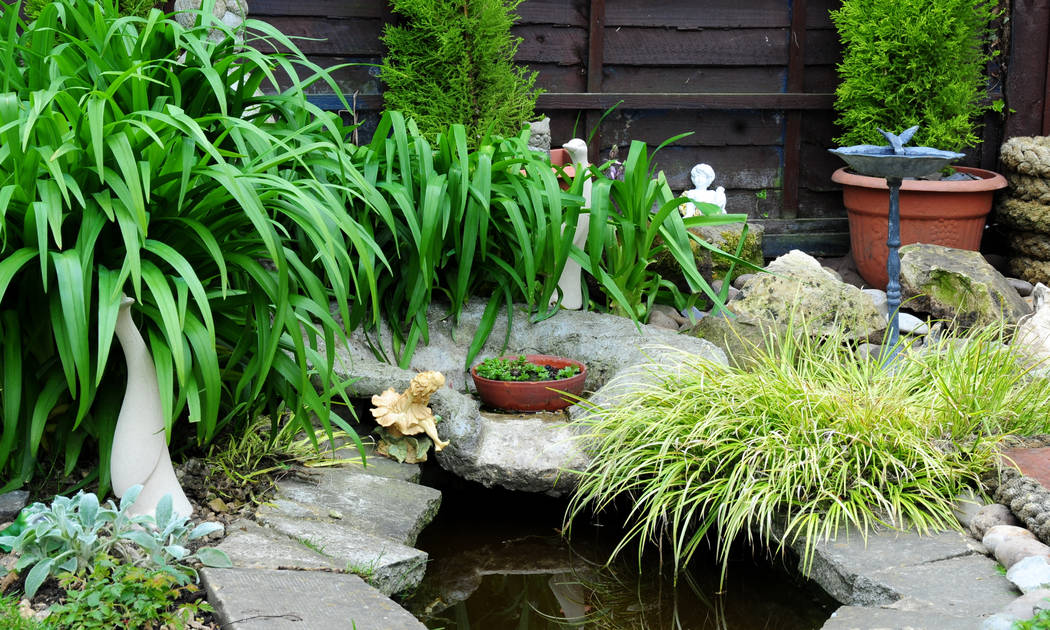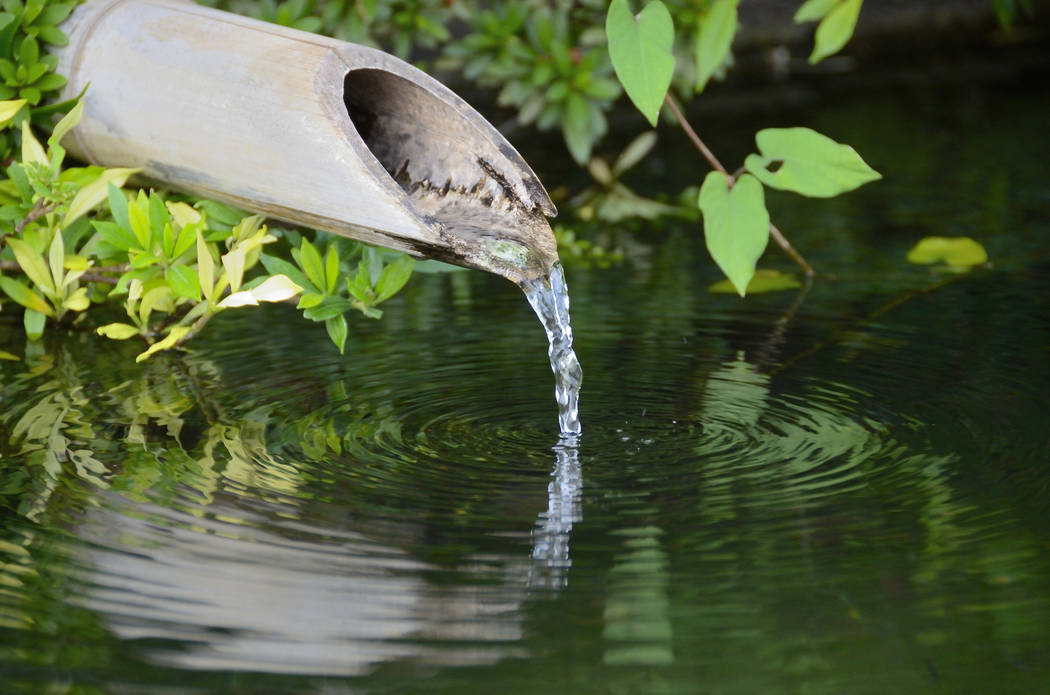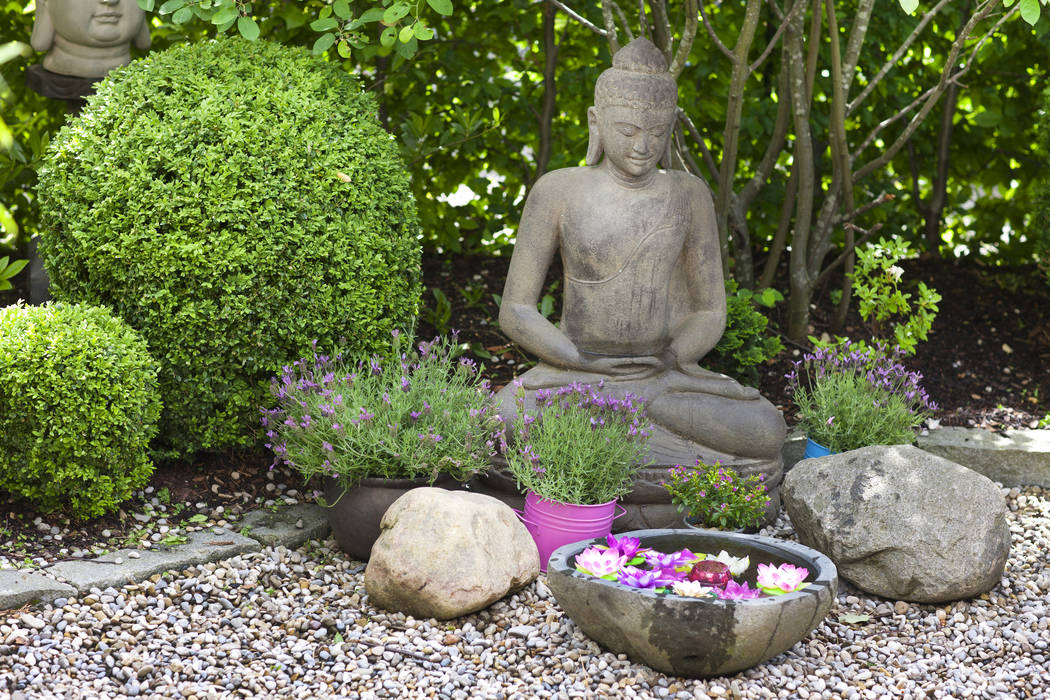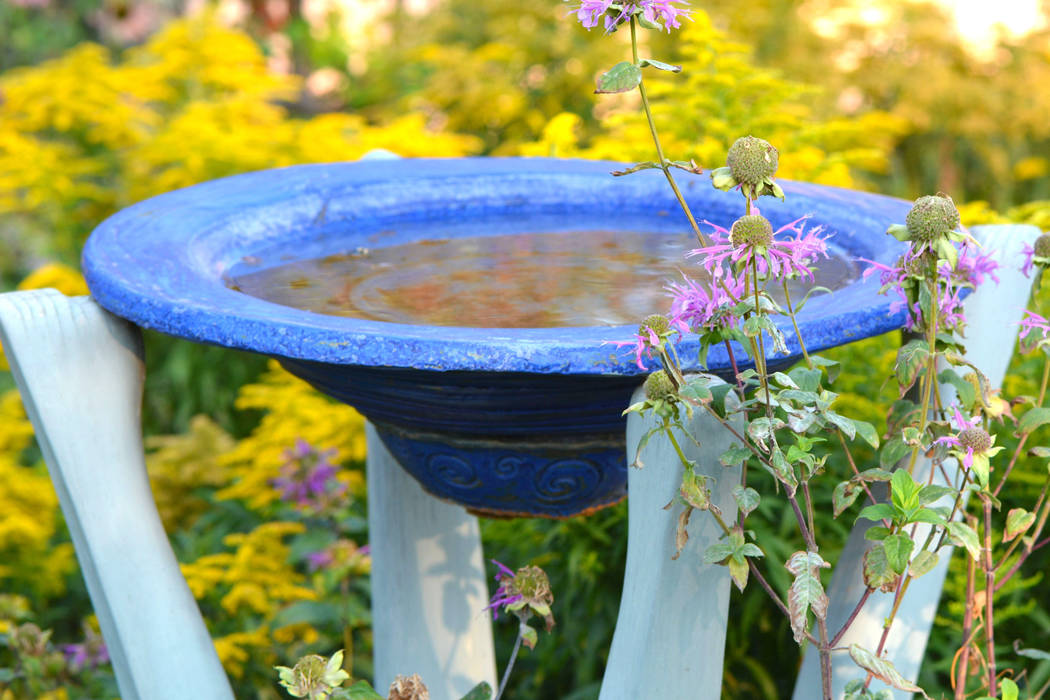Turn your garden into a sanctuary
This summer has been one of extreme heat, smoky air, wild winds, monsoon rainstorms and unaccustomed humidity. What is needed now is serenity, beauty or, more precisely, a Zen garden, healing garden or therapeutic garden — someplace to relax and retrieve our senses.
A Zen garden, rooted in monastic life, is for meditation and contemplation. The garden is relatively small and intended to imitate the essence of nature and to serve as an aid to meditate about the true meaning of life. Classical Zen gardens were created at temples of Zen Buddhism in Kyoto, Japan.
A healing garden is designed for a specific population or place — think Las Vegas Community Healing Garden. It promotes stress reduction through both passive and active nature connections but can also take place indoors via indoor plants. Gardens should be designed so that even when they are not physically accessible, they can be viewed from indoors and be seen throughout the year.
A therapeutic garden is specifically designed to meet the physical, psychological, social and spiritual needs of the people using it as well as their caregivers, family members and friends.
Brandi Eide, botanical gardens supervisor at Springs Preserve, said each of these gardens has specific elements when being created but each should be defined by the individual creating or building it.
“There are traditional plants and elements in a traditional Zen garden, but those plants and elements don’t necessarily fit into our desert environment,” she said. “You can achieve whatever look you want, but keep in mind that it should adapt to the locale.
“My suggestion is to look at photos of gardens and even come to the Springs Preserve and see the plants and trees and water elements that we have here. I always advocate environmental responsibility, and that means proper use of water and plants that are good for the desert.”
Eide said there are many plants that bloom at different times of the year and mixing them within the garden can affect different healing cycles.
A traditional Zen garden is usually constructed of strategically placed rocks and raked stones with architectural type trees. This is referred to as a Japanese rock garden or dry landscape garden. It creates a miniature stylized landscape through the arrangements of rocks (representing mountains), water features, moss, pruned trees and bushes, and gravel or sand that is raked to represent ripples in water. Bamboo, simple yet elegant, is often the tree of choice in a Zen garden.
“The garden should be a place that is calm with minimal visual distractions so one can focus on reducing stress and improve a general well-being,” Eide said. “Specific elements, such as water, stone, bamboo and pebbles can be used in many different ways. Hidden areas under a tree canopy or tucked out of sight from the house can enhance the feeling of ‘getting away’ to the garden.
“But always remember to build it to suit the individual. Its main quality must be to provide respite for the senses.”
Among those individual decisions can be scent, one of the strongest triggers for memory. If there is a certain fragrance from childhood or a scent from an exotic vacation that is reminiscent of a good moment, add that scent to the garden.
Catching a whiff of a fresh fragrance — such as citrus blossoms, sweet peas in bloom or crushed thyme — can make a garden feel like a serene retreat. Cool colors like blue, silver and green can feel more serene in a landscape than hotter reds, yellows, pinks and oranges.
The peaceful nature of water enhances the serenity of the garden. It is a positive sound whether it is a soft recirculating fountain, a trickling sound or a more vibrant splashing that masks the noise of the surrounding neighborhood. Delicate wind chimes add another soothing element.
Another option is to invite birds into the garden. Hang a feeder or choose a water feature with birds in mind. They prefer shallow water and always like to be clean. Be patient and wait for them to discover the garden.
One final suggestion is to create a threshold or mark the garden’s entrance. That gives it a physical transition from one place to another and allows for leaving worries and stress outside.
Eide said if no space is available where a person lives, visit a local park or come to the Springs Preserve to sit and meditate.
“Wherever you determine to be a setting that provides enough focus to distract you from daily life, that is sufficient,” she said. “I have seen a little dish garden or several plants that fit on a table top to be enough of a focus for someone to relax.
“Do what is right for you. It’s OK to bend the rules to make the space your personal quiet and special place.”




















